Buy or gift a stand-alone digital subscription and get unlimited access to dozens of back issues for just £18.99 / $18.99 a year.
Please register at www.exacteditions.com/digital/cornucopia with your subscriber account number or contact subscriptions@cornucopia.net
Buy a digital subscription Go to the Digital EditionWith 19th-century Istanbul in thrall to the music of Italy, an extraordinary theatre was born, the creation of one rather ‘odd character’. Emre Aracı tells a tale of comedy and tragedy
By the 1830s, the ascending star of Italian opera was quite visible above the crescent of the East. Mahmud II had begun to pave the way for the influx of European culture amid a series of Western-style reforms following the tumult of the Auspicious Incident of 1826, when the corrupt and mutinous, once-elite janissaries were brutally disbanded. Now the sultan was to be seen processing along the streets of his imperial city to the strains of European marches, directed by his maestro di musica, Giuseppe Donizetti, eldest brother of the composer Gaetano Donizetti. Giuseppe became Donizetti Bey and eventually rose to the rank of pasha.
Mahmud delighted in Italian singing, and astonished the whole capital by attending an evening’s entertainment given by the French ambassador, where he rapturously applauded the singers, “although he knew nothing of their language”, according to a caustic report in The Times. The Sydney Gazette and New South Wales Advertiser lamented in July 1830: “We fear that he mistakes the vices and follies of Europe for its civilization.”
In 1839 London society was informed by the journal The Musical World that Italian music had “become the rage among Mussulmans”, and that there was “now a brilliant Italian opera at Constantinople”. One Signora Edelina Fritsche, a young Milanese, gave singing lessons to Turkish ladies of fashion, making her rounds in a litter fitted out in crimson velvet and gold, carried by four black slaves and preceded and followed by eight more. The large and splendid theatre was crowded nightly, despite high admission charges. The Turks, “notwithstanding their usual habit of going to bed with the fowls”, sat motionless till the end, often past midnight. Sultan Mahmud sometimes honoured the theatre with his presence, and also had Italian operas performed within the seraglio before the ladies of his court. The repertoire included Bellini’s La Straniera, Meyerbeer’s Il Crociato in Egitto, and Rossini’s L’Italiana in Algeri, with the libretti strangely adapted to suit Turkish ideas. When L’Italiana in Algeri ended with the marriage of Isabella and the Bey and the punishment of poor Taddeo, who received the bastinado on the soles of his feet, it drew shouts of applause rather than laughter.
From 1841, a regular season started to take shape in Pera, home to the large Christian Levantine community. The early prosperity of the Tanzimat era brought great self-confidence to people who had been living for centuries in the meanest conditions in this district of palatial ambassadorial residences. Eager to turn their neighbourhood into a little Paris, the bankers, dragomans and diplomats backed the new opera venture at their own Théâtre de Péra, or Théâtre Bosco.
This was built by Bartolomeo Bosco, a magician, across from today’s Galatasaray Lycée, on land belonging to the Christian Naum Duhanî family, tobacco dealers, originally from Aleppo. Bellini’s Norma inaugurated the first season on November 18, 1841. But the management soon ran into financial difficulties. Not three years later the landowner, Michael Naum, joined in time by his brother Joseph, was persuaded to step in, and the Théâtre de Péra came to be known as Théâtre Italien Naum de Péra, or simply Théâtre Naum.
“An odd character” was how the New York Times would remember Michael Naum in his obituary in 1868. At a young age he had been recruited into the household of Lady Hester Stanhope, “Queen of the Desert”, as dragoman. His duties included shaving his employer’s head and making sieves from split reeds. On his return from Syria he found himself manufacturing fezzes under the patronage of Mahmud II.
In 1831 his mansion burned down in the great fire of Pera, and the land was leased to visiting troupes of entertainers before Bosco built his theatre. In 1844 Naum launched his career as impresario with Donizetti’s Lucrezia Borgia. In 1846,* Ernani*, the first opera by a young Giuseppe Verdi to be performed in Istanbul, opened at his theatre, as musical trends in Italy were ardently followed in the Ottoman capital. Each season Naum would travel to Italy to engage new artistes and a full list of their names would grace the columns of the Journal de Constantinople.
Dr Emre Aracı is a composer and musical historian. His history of Italian opera in 19th-century Istanbul, ‘Naum Tiyatrosu: 19.Yüzyıl İstanbul’un İtalyan Operası’, is published in Turkish by Yapı Kredi. His CDs and his latest books,‘Yusuf Ağa Efendi, The First Turkish Ambassador in 18th-century London’ and ‘Elgar in Turkey’ (Pera Museum), are available from cornucopia.net
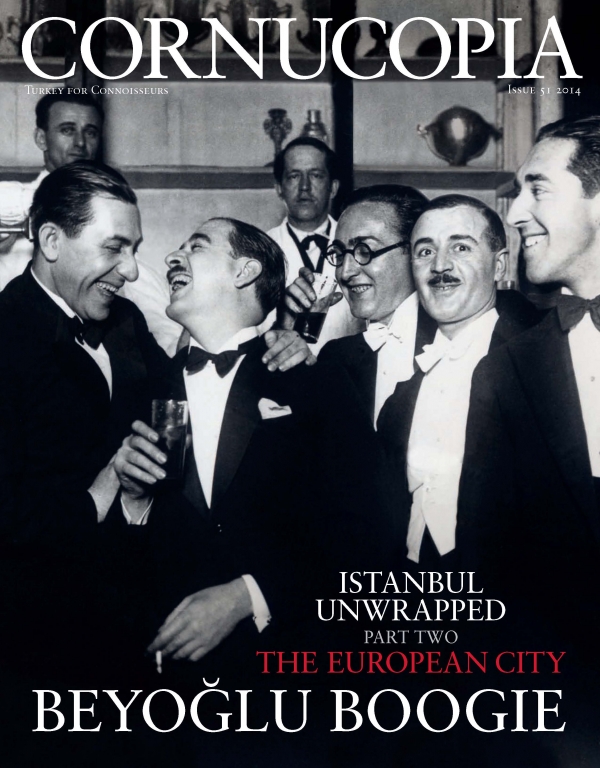 Issue 51, Summer 2014
Istanbul Unwrapped: The European City and the Sultan’s New City
Issue 51, Summer 2014
Istanbul Unwrapped: The European City and the Sultan’s New City
Black musicians, White Russian princesses, Turkish flappers… During the Jazz Age, Beyoğlu was a ferment of modernity and decadence. By Thomas Roueché
For 700 years, the European quarter was home to Genoese, Jews, Greeks and many others. Norman Stone charts the district’s changing fortunes
Maureen Freely recalls the artists and writers who enlivened her childhood with their flamboyant bravado and unspoken sadness
In the very thick of the city, with its fret and fuss, belching traffic and urban sprawl, lies a glade scented with linden blossoms. Here the young Sultan Abdülmecid built a jewel of a palace, grand but tiny, which is still a green oasis and place of escape. By Berrin Torolsan
Until the 20th century, visitors would sail serenely into Istanbul to disembark opposite the Topkapi. After this spectacular start, reality would set in. By David Barchard
For more than two centuries the Ottomans were obsessed by the elegance of the tulip and grew over 3,000 varieties, each characterised by almond-shaped petals drawn out into an exaggerated taper.
With its hundreds of different shapes, pasta is today one of the most widely consumed and enjoyed of all the staples
Across the Golden Horn from the Topkapı and the bazaars is the European City, where fortunes have for centuries been made and lost.
Patricia Daunt extols the palatial embassiess that adorn the heights of old Pera. Photographs by Brian McKee
As the old European quarters flourished in their seclusion, Sultan Abdülmecid had a dream – and expanded to the east
The Sakip Sabanci Museum has just celebrated 600 years of diplomatic relations between Poland and Turkey. Jason Goodwin finds deep-rooted affinities between the two countries
John Carswell introduces the mesmerising entries in this year’s Ancient and Modern Prize for original research
 Issue 51, Summer 2014
Istanbul Unwrapped: The European City and the Sultan’s New City
Issue 51, Summer 2014
Istanbul Unwrapped: The European City and the Sultan’s New City
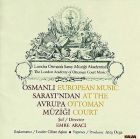
The London Academy of Ottoman Court Music, with Emre Aracı. Produced by Ates Orga,
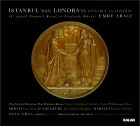
Prague Symphony Orchestra, directed by Emre Aracı, produced by Ateş Orga
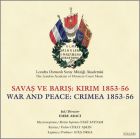
The London Academy of Ottoman Court Music, with Emre Araci
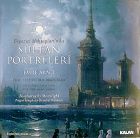
The Prague Symphony Chamber Orchestra with Cihat Askin, violin. Directed by Emre Araci and produced by Ateş Orga

Cornucopia works in partnership with the digital publishing platform Exact Editions to offer individual and institutional subscribers unlimited access to a searchable archive of fascinating back issues and every newly published issue. The digital edition of Cornucopia is available cross-platform on web, iOS and Android and offers a comprehensive search function, allowing the title’s cultural content to be delved into at the touch of a button.
Digital Subscription: £18.99 / $18.99 (1 year)
Subscribe now